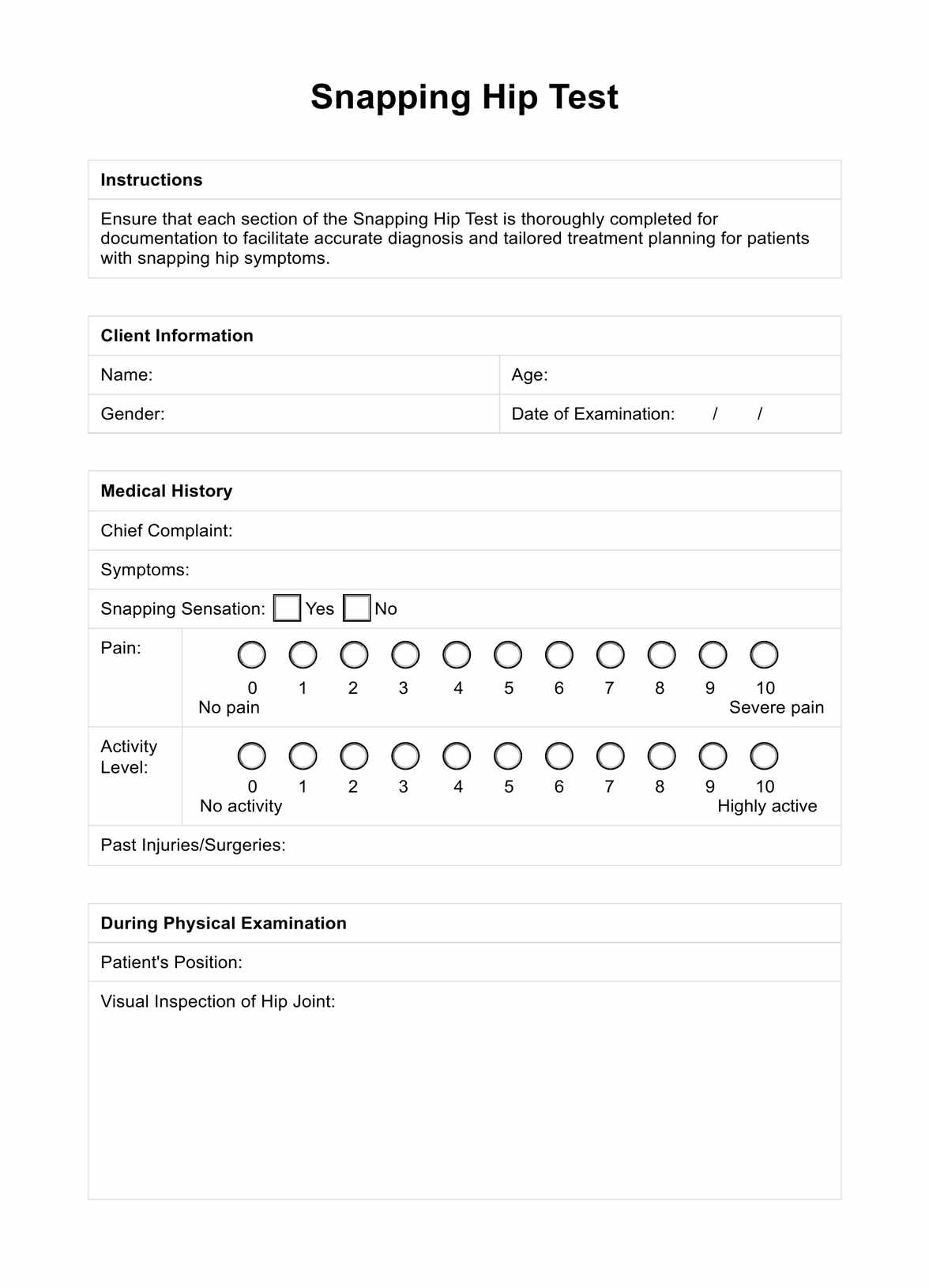Individuals experiencing snapping sensations or discomfort in the hip joint during movement, such as walking, running, or bending, may benefit from undergoing a snapping hip test. It is particularly relevant for those suspected of having snapping hip syndrome or other hip pathologies.

Snapping Hip Test
Gain access to an essential resource, the Snapping Hip Test, to assist you in diagnosing a snapping hip during physical assessments. Download today!
Snapping Hip Test Template
Commonly asked questions
Common symptoms include a snapping sensation or popping sound in the hip joint during movement, pain or discomfort in the hip, groin, or buttock area, and a feeling of catching or instability in the hip joint.
During the test, the patient is typically positioned lying down, and the healthcare provider moves the patient's leg through various ranges of motion while observing for snapping sensations or audible sounds. Specific tests, such as the Ober and flexion tests, may also be performed to assess for snapping hip syndrome.
EHR and practice management software
Get started for free
*No credit card required
Free
$0/usd
Unlimited clients
Telehealth
1GB of storage
Client portal text
Automated billing and online payments











